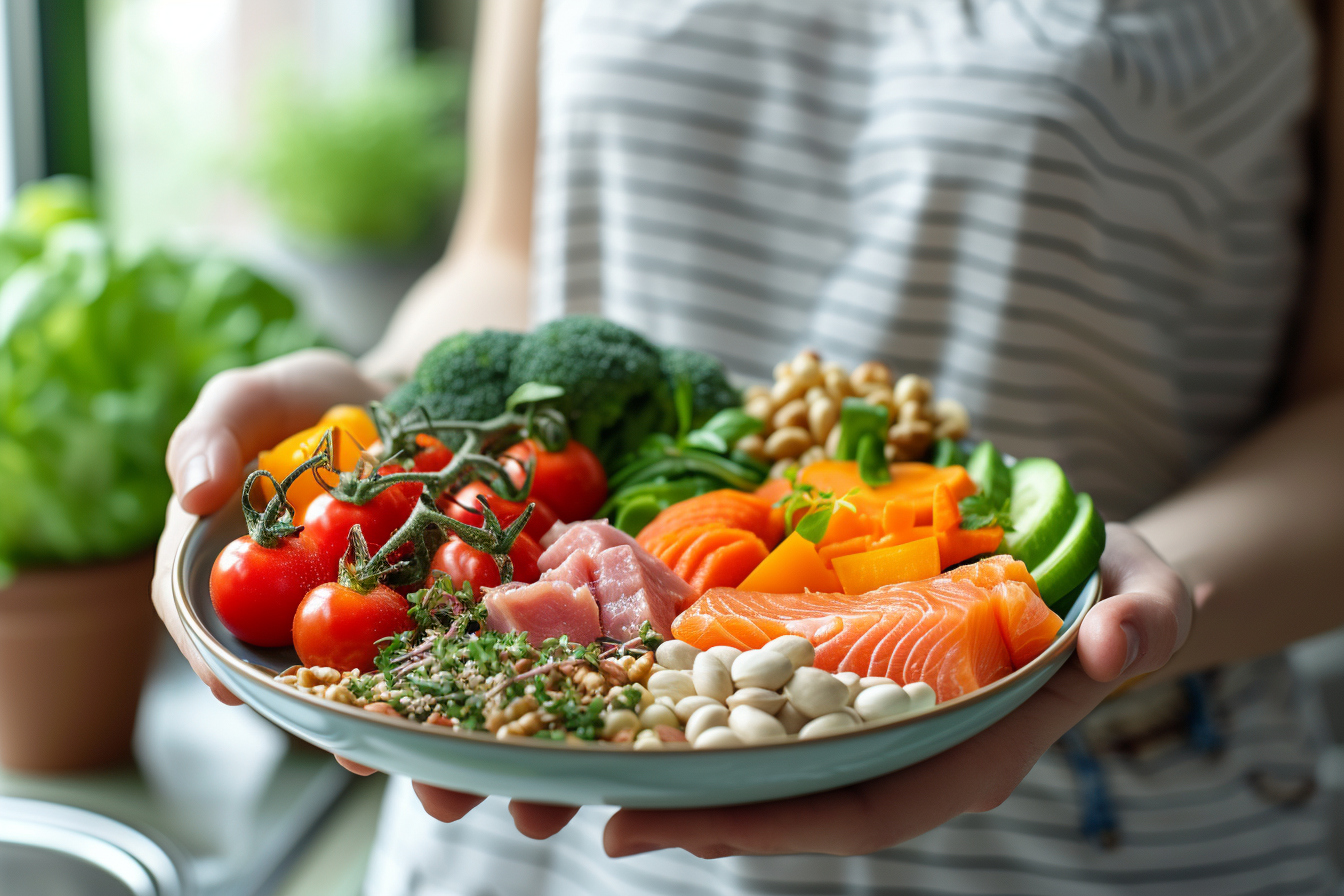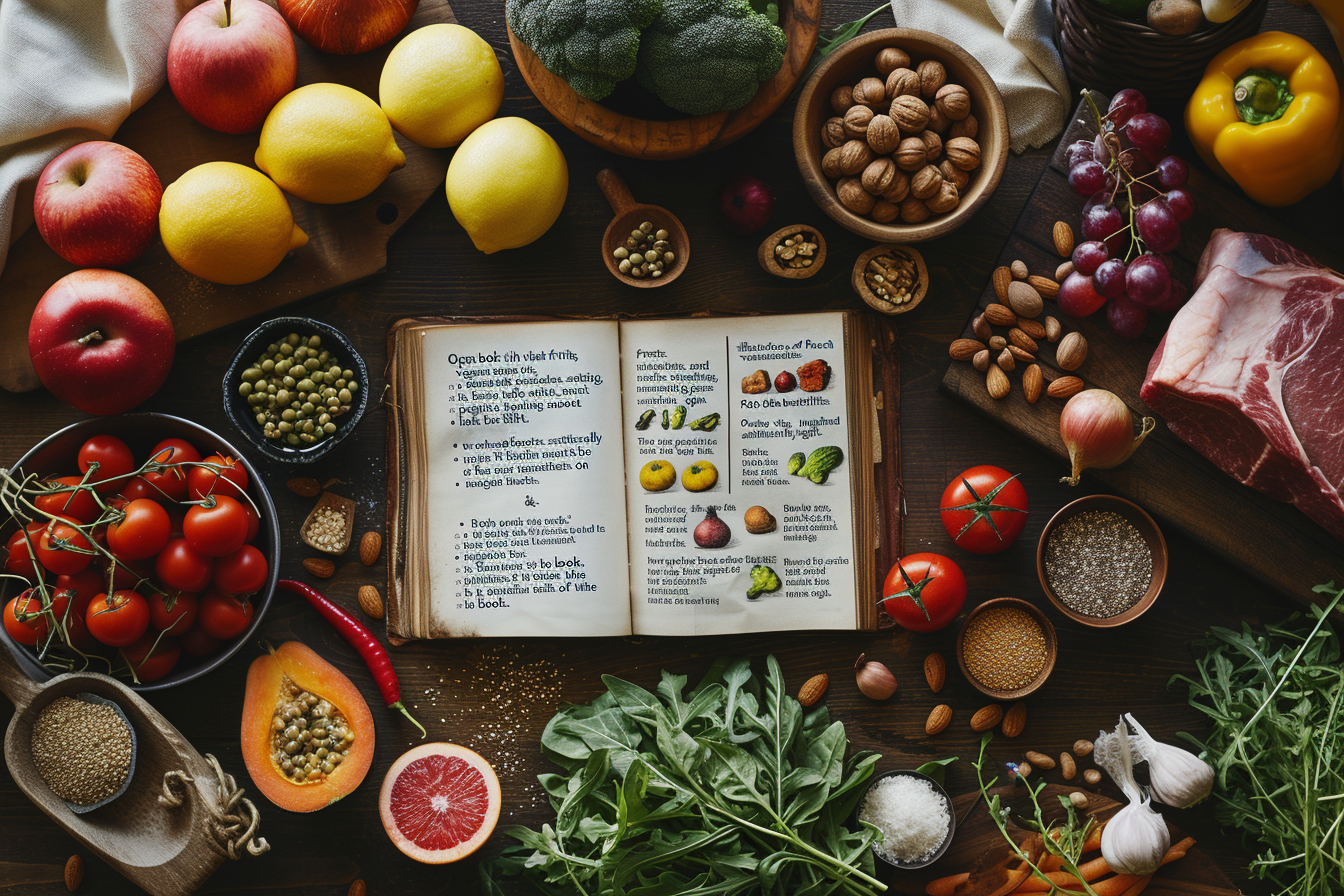The Paleo diet, often referred to as the ‘caveman diet,’ is a nutritional plan based on the presumed dietary patterns of our ancient ancestors. This dietary approach emphasizes eating whole, unprocessed foods that would have been available during the Paleolithic era, including meats, fish, fruits, vegetables, nuts, and seeds. By mirroring the eating habits of our forerunners, proponents of the Paleo lifestyle believe we can attain numerous health benefits. This article delves into the advantages of the Paleo diet and provides practical advice for meal planning.
Health benefits of the paleo diet

Improved Weight Management
Adopting the Paleo diet often leads to weight loss and improved body composition. The emphasis on lean proteins, healthy fats, and low glycemic index fruits and vegetables helps in reducing the caloric intake while increasing satiety.
Increased Energy Levels
Many individuals report a surge in energy when they switch to the Paleo lifestyle. The exclusion of overly processed foods and added sugars, combined with the increased intake of nutrient-dense, whole foods, contributes to more stable blood sugar levels and sustained energy throughout the day.
Enhanced Digestive Health
With a focus on fiber-rich fruits and vegetables, alongside the elimination of grains and legumes that can be difficult to digest for some, the Paleo diet often leads to improved gut health and function. This, in turn, can reduce the occurrence of bloating, gas, and irregular bowel movements.
Reduced Inflammation
A core benefit of the Paleo diet is its potential to reduce systemic inflammation, a known risk factor for many chronic diseases. By eliminating foods such as refined grains and sugars, which are known to contribute to inflammation, and increasing the intake of anti-inflammatory foods like leafy greens and omega-3-rich fish, individuals may experience less inflammation-related pain and improved overall health.
Lower Risk of Certain Diseases
Due to its nutritional composition, the Paleo diet can also contribute to a lower risk of lifestyle-related diseases such as type 2 diabetes, cardiovascular disease, and certain cancers. This protective effect is thought to arise from the diet’s low sugar and high antioxidant content.
Meal planning tips for the paleo diet
Focus on a Variety of Protein Sources
Ensure you get enough protein by including a variety of meats such as chicken, turkey, beef, and game meats, as well as fish and seafood. Eggs are also a staple protein source within the Paleo diet. This variety helps maintain interest in your meals and provides a wide range of nutrients.
Incorporate Healthy Fats
Healthy fats are crucial on the Paleo diet for both satiety and energy. Add sources such as avocados, coconut oil, olive oil, nuts, and seeds to your meals. These fats can also help your body absorb vitamins from your food more effectively.
Stock Up on Fruits and Vegetables
Fruits and vegetables should make up a large portion of your meals, providing essential vitamins, minerals, and fiber. Choose a rainbow of colors to ensure a broad spectrum of nutrients. Berries, leafy greens, and cruciferous vegetables like broccoli and cauliflower are particularly nutrient-dense choices.
Prepare Meals in Advance
Planning and preparing meals ahead of time can simplify following the Paleo diet, especially for those new to this way of eating. Batch-cooking proteins or preparing salads and vegetable dishes in advance can save time and reduce the temptation to reach for non-compliant foods.
Keep Snacks Simple
For snacks, focus on whole foods that are easy to manage on the go, like nuts, seeds, fresh fruit, or slices of vegetables with a Paleo-friendly dip such as guacamole or almond butter.
Experiment with Paleo Alternatives
To keep meals interesting, experiment with Paleo alternatives to some of your favorite dishes. For example, zucchini can be spiraled into ‘noodles,’ cauliflower can become ‘rice,’ and ground almonds can replace breadcrumbs for coating meats.
Stay Hydrated
Although not directly related to meal planning, staying adequately hydrated is essential for overall health and can assist with digestion and satiety. Water, herbal teas, and bone broths are all Paleo-friendly choices that can help keep you hydrated throughout the day.
Mind Your Portion Sizes
Even though the Paleo diet is not strictly about caloric intake, being mindful of portion sizes can help prevent overeating. Listen to your body’s hunger cues and adjust your portion sizes accordingly.
Indulge Wisely
While sugary treats, grains, and dairy are out, it is still possible to indulge wisely on the Paleo diet. Dark chocolate (70% or more), for example, is a popular choice to satisfy the occasional sweet craving while providing antioxidants.
Keep Seasonality in Mind
Eating seasonally not only ensures that produce is at its peak in flavor and nutrition but can also be more cost-effective. Seasonal shopping at local farmers’ markets can also support community agriculture and reduce the environmental impact associated with long-distance food transport.
By following these tips and embracing the principles of the Paleo diet, individuals can enjoy a diverse and satisfying array of meals while reaping the numerous health benefits the lifestyle offers. Furthermore, the intrinsic focus on whole, nutrient-dense foods can lead to an enhanced appreciation for the natural flavors and textures that these foods provide, making the Paleo diet not just a dietary choice but a journey towards a more harmonious way of eating with nature.


